Terms / definition (accuracy, unit, etc.)
- Direction of pitching, yawing, & rolling
- What do "pitching, yawing, rolling (pitch, yaw, roll)" mean?
-

◆ Pitching: Rotating movement around the axis perpendicular (left and right) to the traveling direction
(front and back)
→ Inclination of up and down
◆ Yawing: Rotating movement around the axis perpendicular (up and down) to the traveling direction
(front and back)
→ Inclination of left and right
◆ Rolling: Rotating movement around the axis of travelling direction(forward and backward)
- Difference between straightness, pitching and yawing
- Please tell me the difference between straightness, pitching and yawing
-
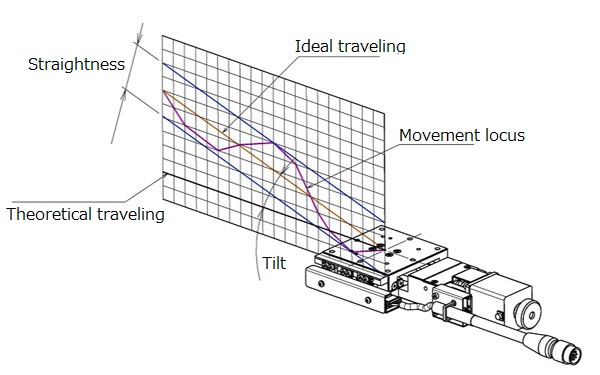
◆ Straightness [unit: μm]
・ Maximum displacement amount (distance) in the horizontal and vertical directions with respect
to the ideal movement axis.
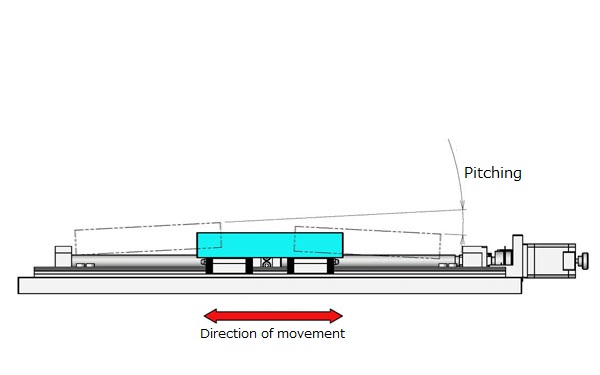
◆ Pitching [unit: ″]
・ Maximum displacement angle in the vertical swing direction.
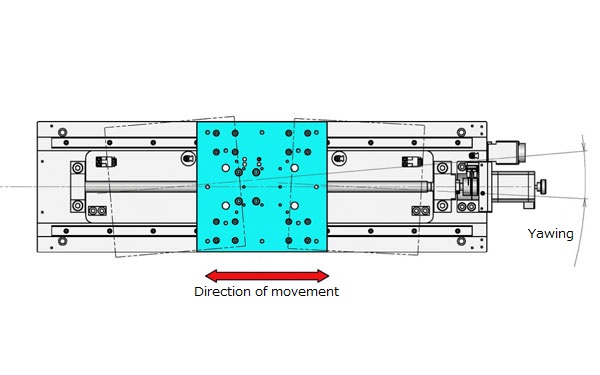
◆ Yawing [unit: ″]
・ Maximum displacement angle in the horizontal swing direction.
- Horizontal Z-axis / difference in straightness and verticality of movement
- [Horizontal plane Z axis] Please tell me the difference between straightness and verticality of motion
-
◆ Straightness of movement [unit: μm]
・ Maximum displacement amount (distance) in the horizontal and vertical directions with respect
to the ideal movement axis.
◆ Verticality of movement [unit: μm]
・ Fix the horizontal plane Z axis stage and right angle reference on reference plane.
・ Measure the displacement between the right angle reference and the measuring equipment
set on the top of the stage.
・ The maximum difference among the values shall be the "Perpendicularity".
- Difference between eccentricity and runout of rotary stage
- [Rotary stage] Please tell me the difference between eccentricity and runout
-
◆ Eccentricity [unit: μm]
・ Displacement of center axis of rotation in horizontal direction
◆ Runout [unit: μm]
・ Maximum difference of displacement with respect to the reference plane when making one rotation
with outer circumference as measurement point
- Difference between parallelism and motion parallelism
- Please tell me the difference between parallelism and motion parallelism
-
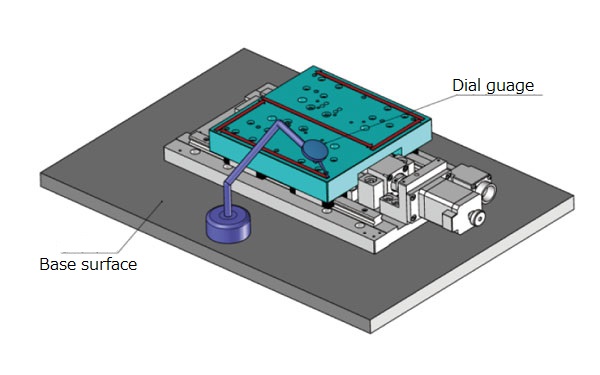

◆ Parallelism [unit: μm]
· Fix the stage on the reference plane.
· A numerical value indicating how parallel the stage carriage and the reference plane are.
◆ Motion parallelism [unit: μm]
・ Fix the stage on the reference plane.
・ Place equipment for measuring the height with the reference plane on the stage carriage.
・ Maximum difference of measured values by moving the stage.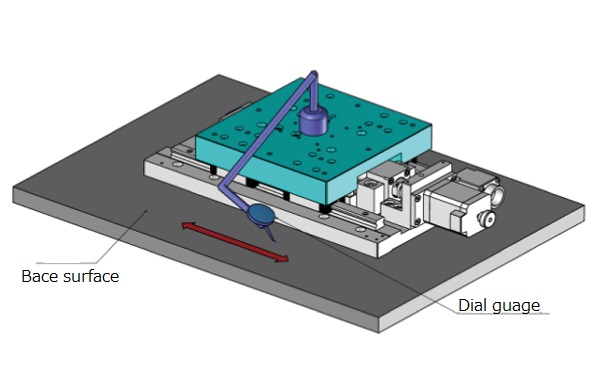

◆ Parallelism [unit: μm]
· Fix the stage on the reference plane.
· A numerical value indicating how parallel the stage carriage and the reference plane are.
◆ Motion parallelism [unit: μm]
・ Fix the stage on the reference plane.
・ Place equipment for measuring the height with the reference plane on the stage carriage.
・ Maximum difference of measured values by moving the stage.
- Difference between allowable moment load and moment rigidity
- Please tell me the difference between allowable moment load and moment rigidity
-
◆ Allowable moment load [unit: N · m] (manual stage)
It is a numerical value that specifies how far the load can be applied away from the stage surface.
* Criteria within tolerance
1. The feeling of operation is not significantly impaired
2. Accuracy after disconnecting the load can fit within the catalog guaranteed values
◆ Moment rigidity [Unit: "/ N · cm]
・ The displacement angle per 1 N · cm when moment load is applied toward the stage carriage
in the direction of the respective pitch, yaw & roll
* Based on the distance from the center of the stage carriage (upper surface)
* The moment rigidity value in the catalog is described as a representative actual measurement value.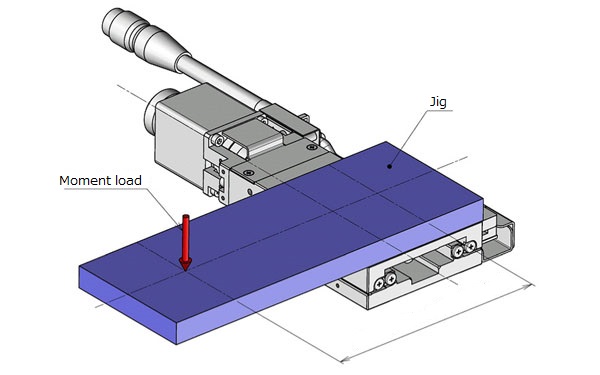
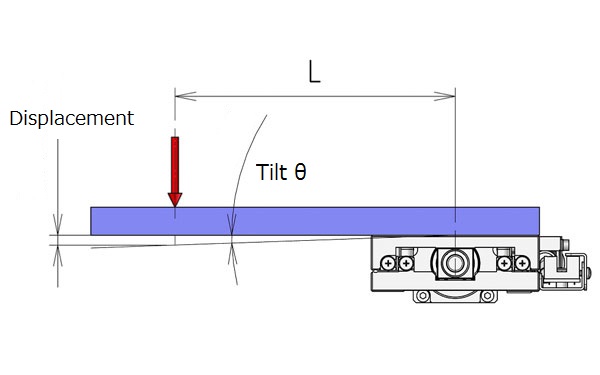
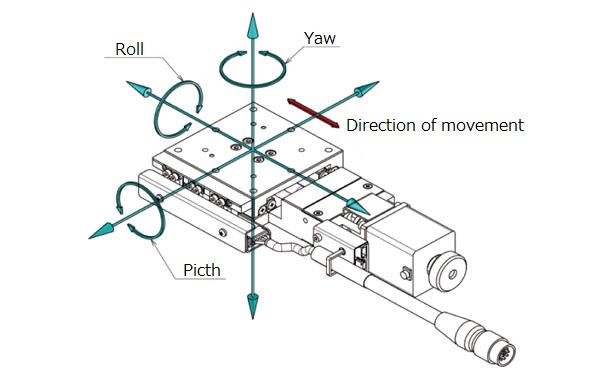
- What is reverse type (R type)
- What is the direction of reverse type (R type)?
-
It is the direction which reflected the manual stage in the mirror.
In the side push type, the operating position (micrometer / feed screw) and the position of the clamp
are switched.
In the center push type, only the clamp is on the opposite side of the stage carriage.